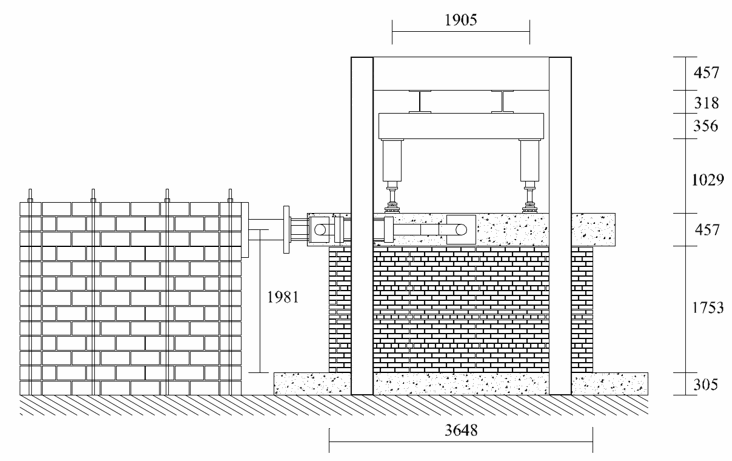Omer O. Erbay[1] and Daniel P. Abrams[2]
- Doctoral Student, University of Illinois at Urbana-Champaign, 1235 Newmark Civil Engineering Laboratory, 205 N. Mathews, Urbana, IL, 61801
- Hanson Engineers Professor of Civil and Environmental Engineering, University of Illinois at UrbanaChampaign, 1245 Newmark Civil Engineering Laboratory, 205 N. Mathews, Urbana, IL, 61801
ABSTRACT
One of the challenging tasks of current engineering practice is to systemically determine the deficiencies of existing structures and then provide rational and economical solutions to these problems. A rational understanding of the performance characteristics of structures and their components is essential to efficiently accomplish this task. The purpose of this paper is to investigate the performance characteristics of both plain and rehabilitated unreinforced old masonry (URM) shear walls to in-plane loads.
A series of full-scale shear walls were tested under harmonic deformation cycles at quasistatic loading rates. The deformation level was progressively increased in each test until there was a significant loss in the force carrying capacity of the shear wall. The walls were constructed using reclaimed solid clay bricks (units compressive strength of 28MPa [4050psi]) to represent the early twentieth century construction characteristics. Aspect ratio, height-tolength, was held constant at approximately 0.5 for each wall. Type S mortar, having cement:lime:sand ratio of 1:3½:4½ was used in constructing the walls. The vertical stress was maintained constant throughout each test and was set equal to 0.62Mpa [90psi] and 0.90Mpa [130psi].
Two plain (non-rehabilitated) and a rehabilitated wall were tested as part of this program. The plain wall after being tested was repaired for further testing. The center-core technique was used to rehabilitate the second wall. Performance parameters were deduced from the experiments in the context of the FEMA 273 Rehabilitation Guidelines (FEMA, 1997). The performance parameters of interest were strength, stiffness, and energy absorption and deformation capacities.
This paper summarizes the preliminary results of the shear test series. The results showed that sliding as well as flexural strength of plain walls were enhanced by the center-core method. The strain history of the embedded reinforcing bars suggested that walls rehabilitated with this method can be treated as reinforced masonry walls.
Key words: unreinforced brick masonry, shear strength, ductility, center-core, rehabilitation
RETFIT04



